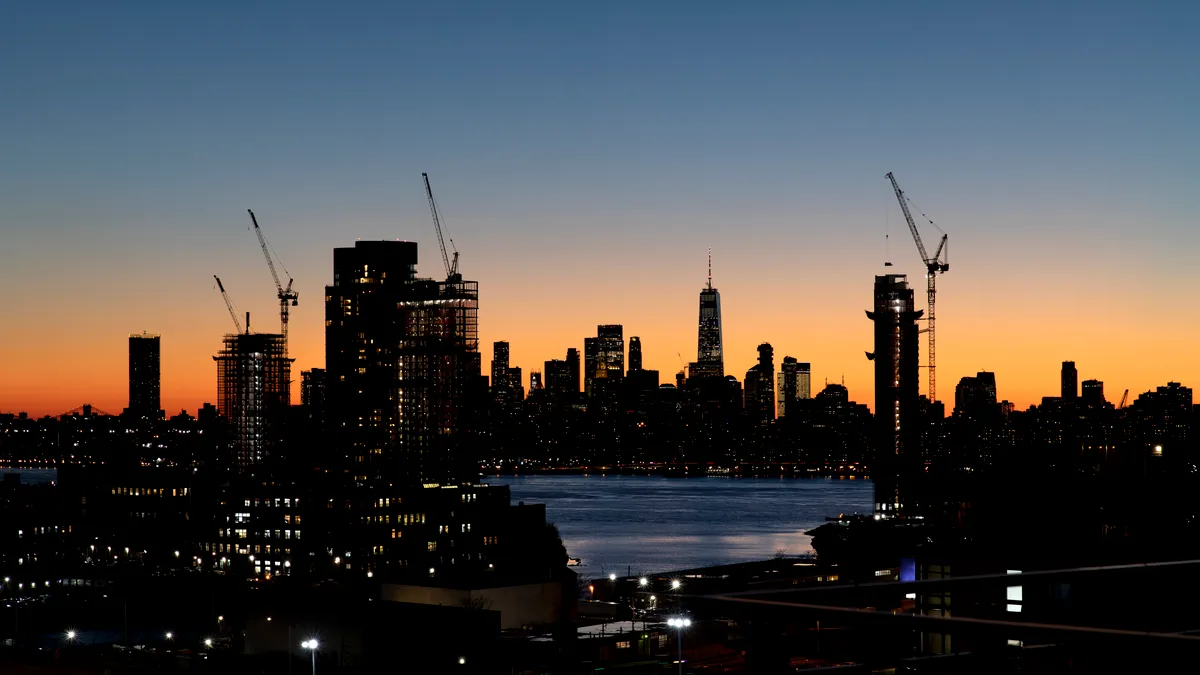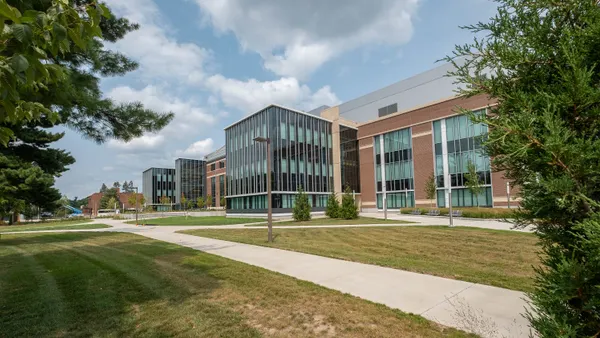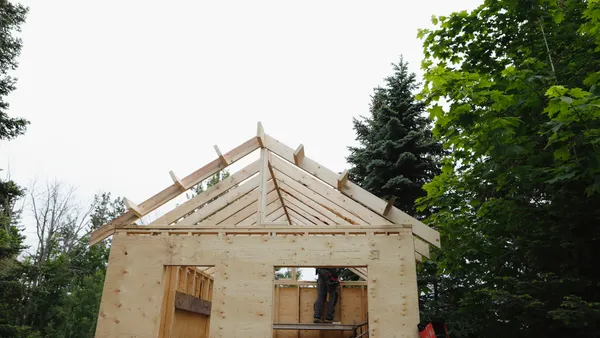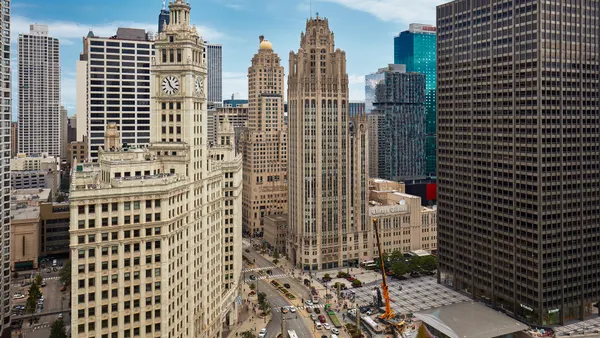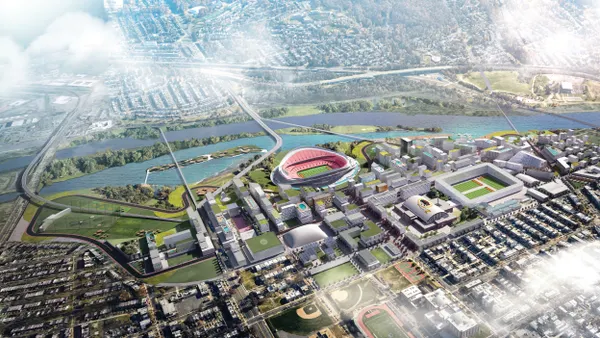Dive Brief:
- New York City is making a bid to become a national leader in mass timber construction with a technical assistance program launched in September that will support active projects in early planning and design phases.
- The “mass timber studio” will provide an anticipated nine design teams with grants of $25,000 each to conduct design, technical and economic feasibility assessments, according to the New York City Economic Development Corporation. The NYCEDC operates the program alongside the Mayor’s Office for Climate and Environmental Justice.
- Roughly a dozen buildings using mass timber now exist in the city, and the program aims to overcome the building industry’s current lack of technical know-how and fire-safety concerns regarding mass timber, the NYCEDC told Smart Cities Dive.
Dive Insight:
New York City’s interest in mass timber is rooted in its climate goals to drive down embodied carbon: the greenhouse gas emissions associated with building materials. Building materials and construction are responsible for 11% of global energy-related carbon emissions.
Much construction relies on the high-emissions materials of concrete and steel. But mass timber has emerged as a lower-carbon alternative, with its potential to be renewable and even store carbon pulled from the atmosphere as trees grow. Mass timber, short for “massive timber,” is an umbrella term for engineered wood products that are created by sticking together smaller pieces of wood.
Despite the benefits, “the jury is still out” on whether using more wood will contribute to or prevent further climate change, since the emissions and ecological impacts of wood depend on where it is sourced from, according to a recent report by the U.S. Green Building Council and nonprofit research organization RMI. The report says the building industry will have to learn to distinguish between wood products with good and bad climate consequences.
The NYCEDC said its purview is within the five boroughs of New York City, but in order to make mass timber thrive in the city, “we need to be thinking more holistically about a supply chain.” That’s why the “mass timber studio” includes partners well positioned to think about wood sourcing, such as the U.S. Forest Service, the industry-funded Softwood Lumber Board and nonprofit WoodWorks, the NYCEDC said.
The NYCEDC told Smart Cities Dive that mass timber represents a “huge untapped potential” to make a dent in New York City’s carbon footprint. Mass timber construction is also quieter, cleaner and can be roughly 25% faster than traditional construction, since the materials are fabricated in advance and put together on site, the NYCEDC said.
Recent policy changes in the city seek to tap mass timber’s potential, with 2022 building code updates allowing mass timber buildings up to 85 feet tall. Also last year, Mayor Eric Adams signed an executive order requiring the city’s capital project agencies to lower embodied carbon from municipal construction projects.
The building industry has a “ton of appetite” to use mass timber but lacks familiarity with doing so, NYCEDC said. In particular, skepticism exists regarding the fire safety of mass timber, a lingering symptom of fires that blazed decades ago in wood buildings, according to the NYCEDC. But the organization said that mass timber is a totally different set of materials that is just as fire safe as concrete or steel.
Overcoming that hesitancy is the mass timber studio’s goal, along with raising public awareness about mass timber benefits, connecting design teams with city actors and identifying the potential for new business and job creation through mass timber construction expansion, according to a news release.



